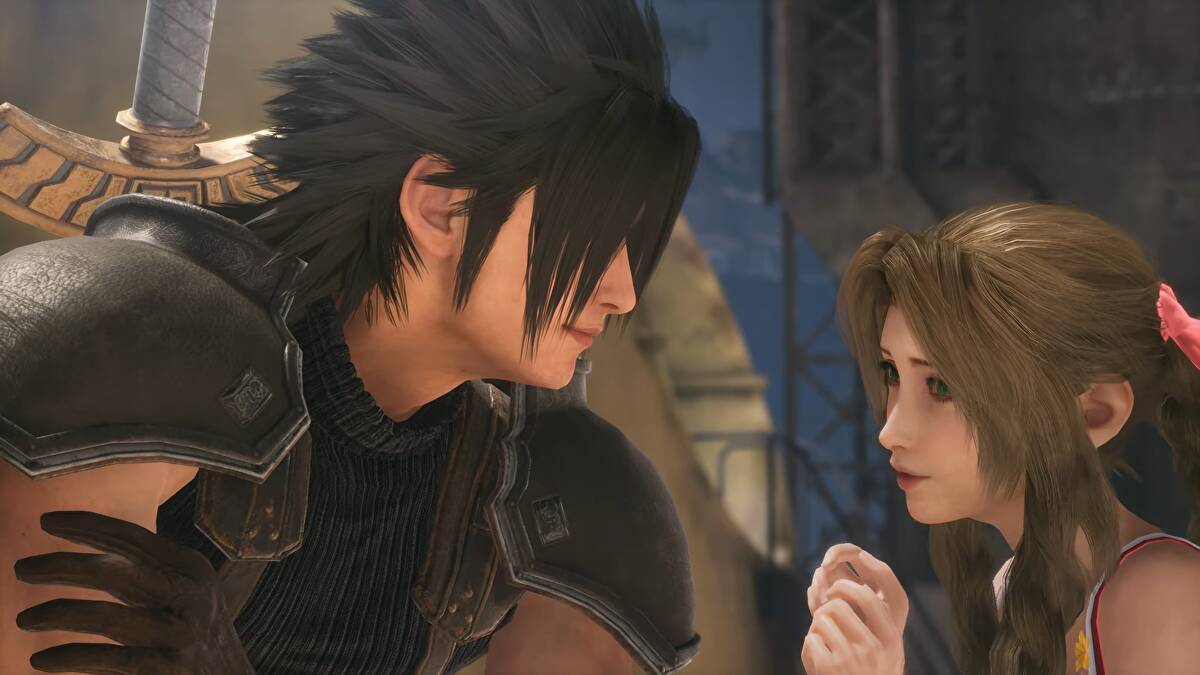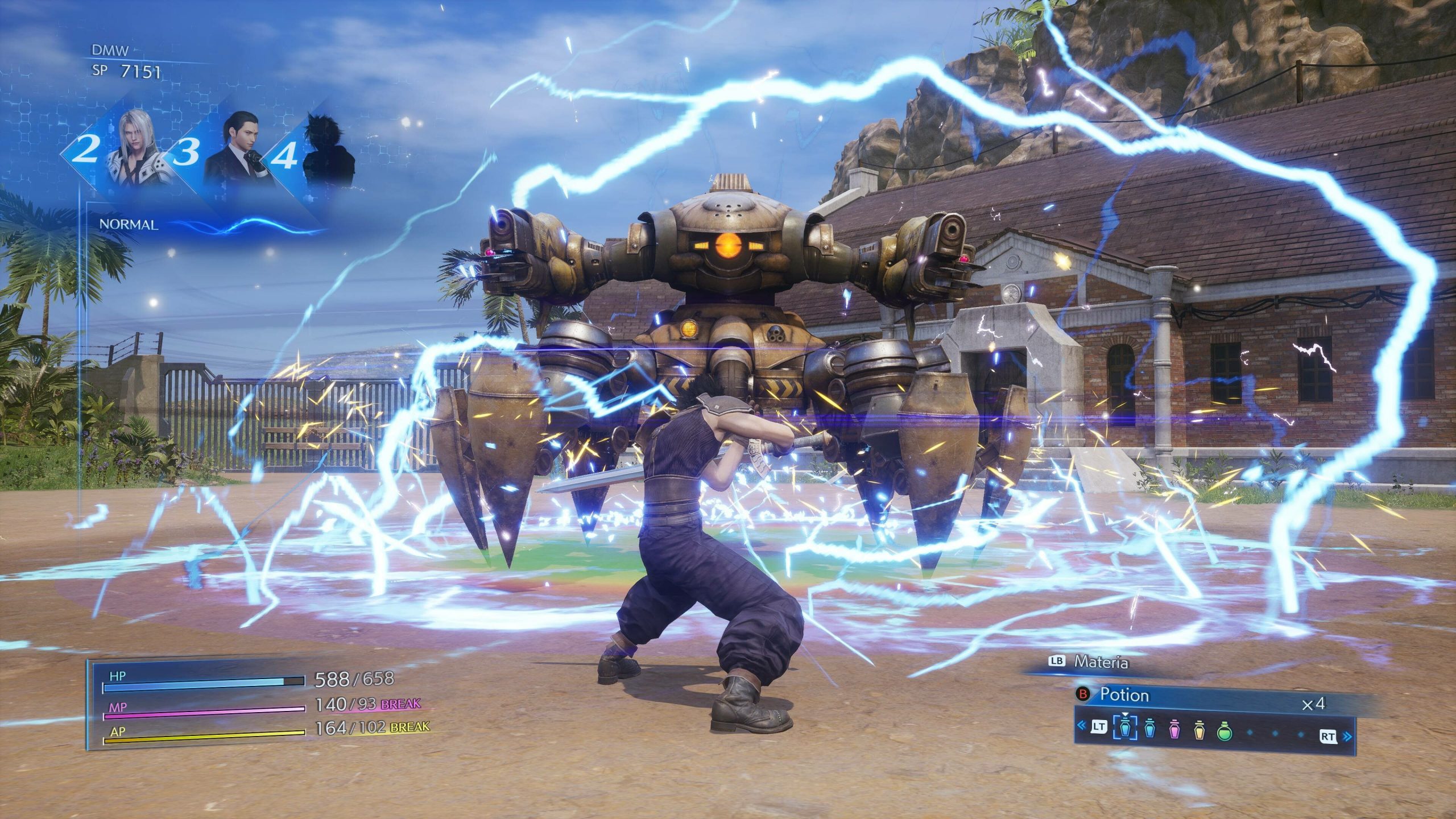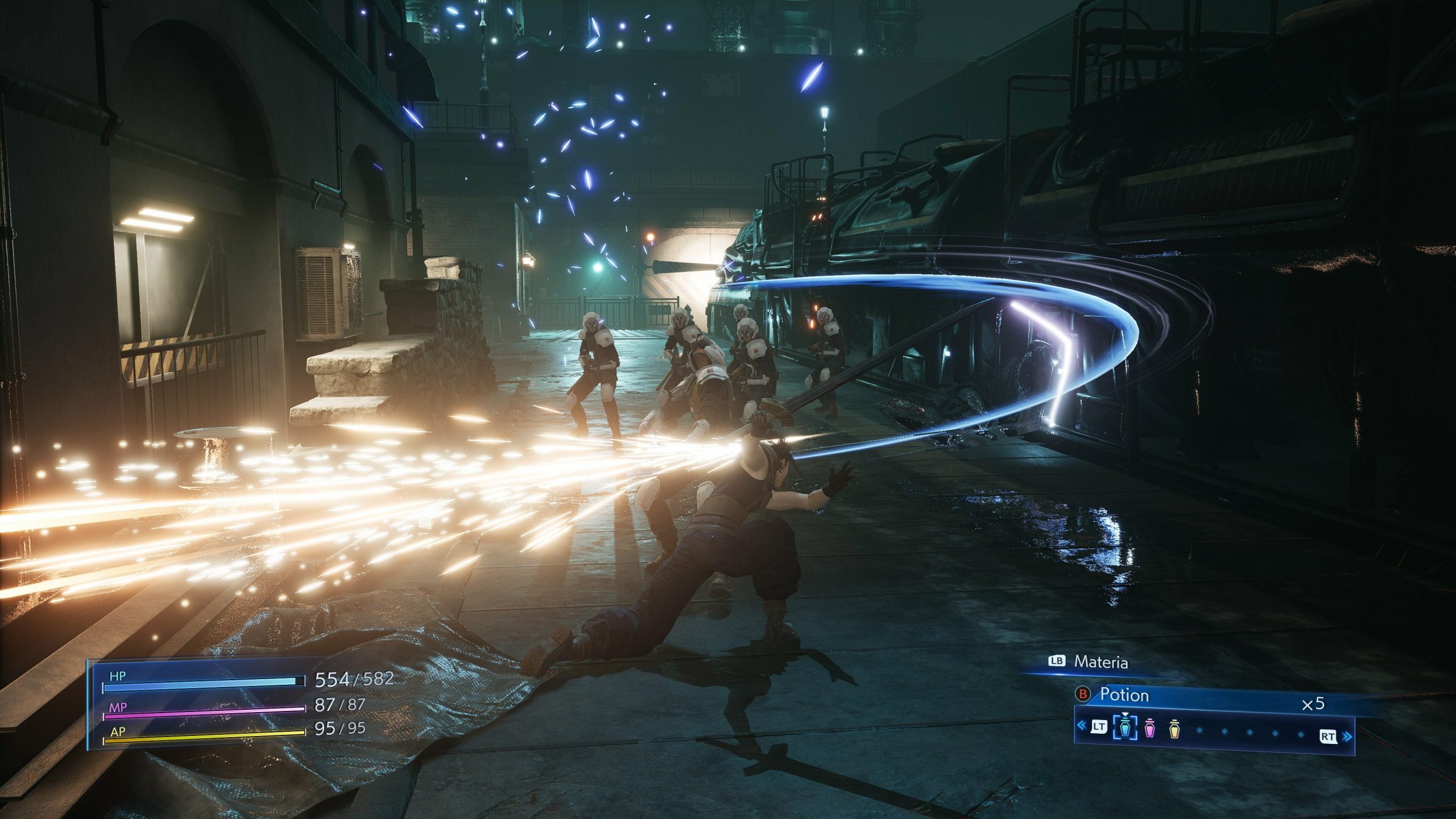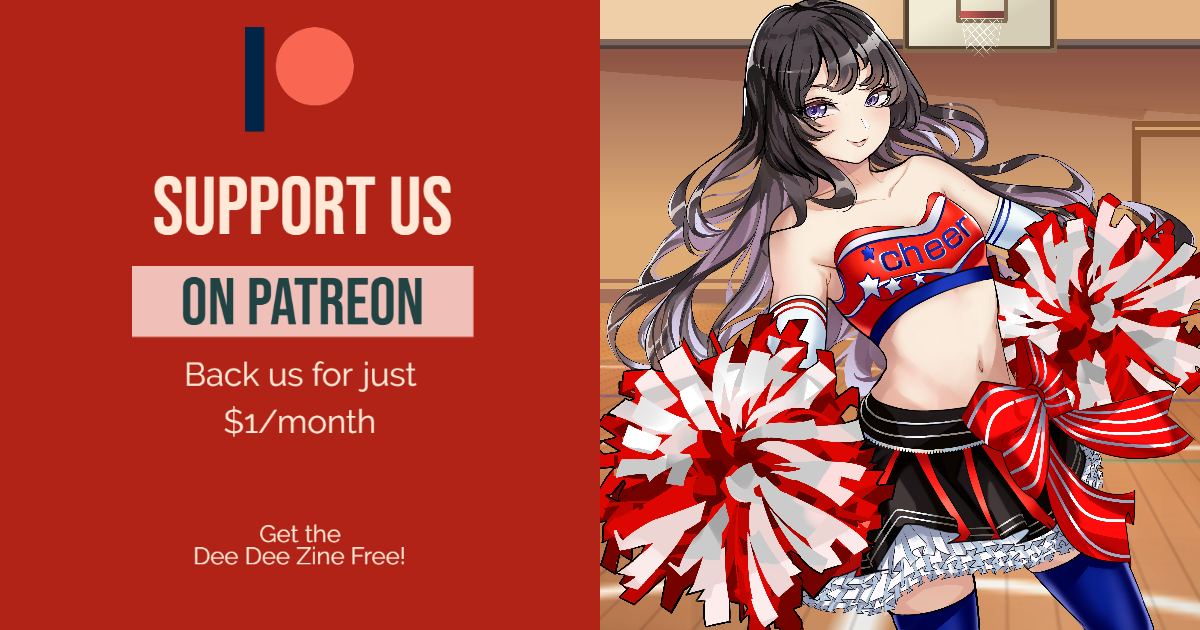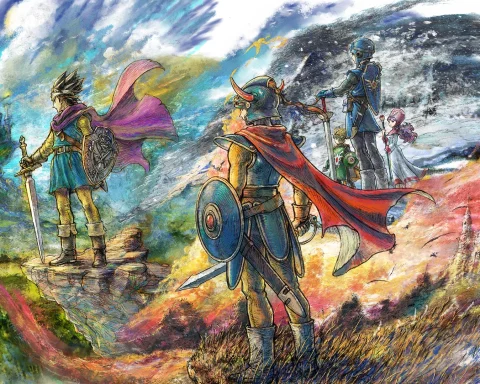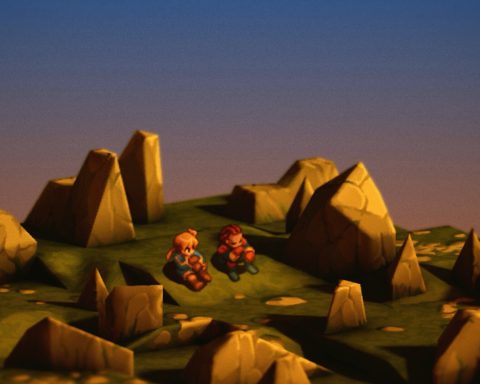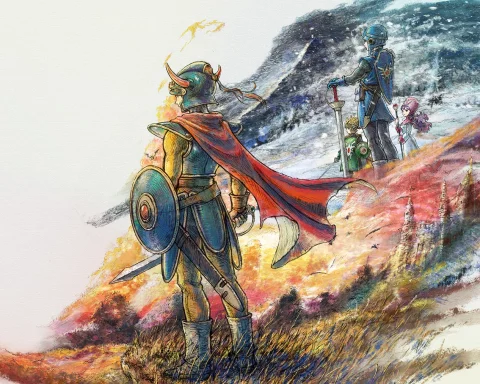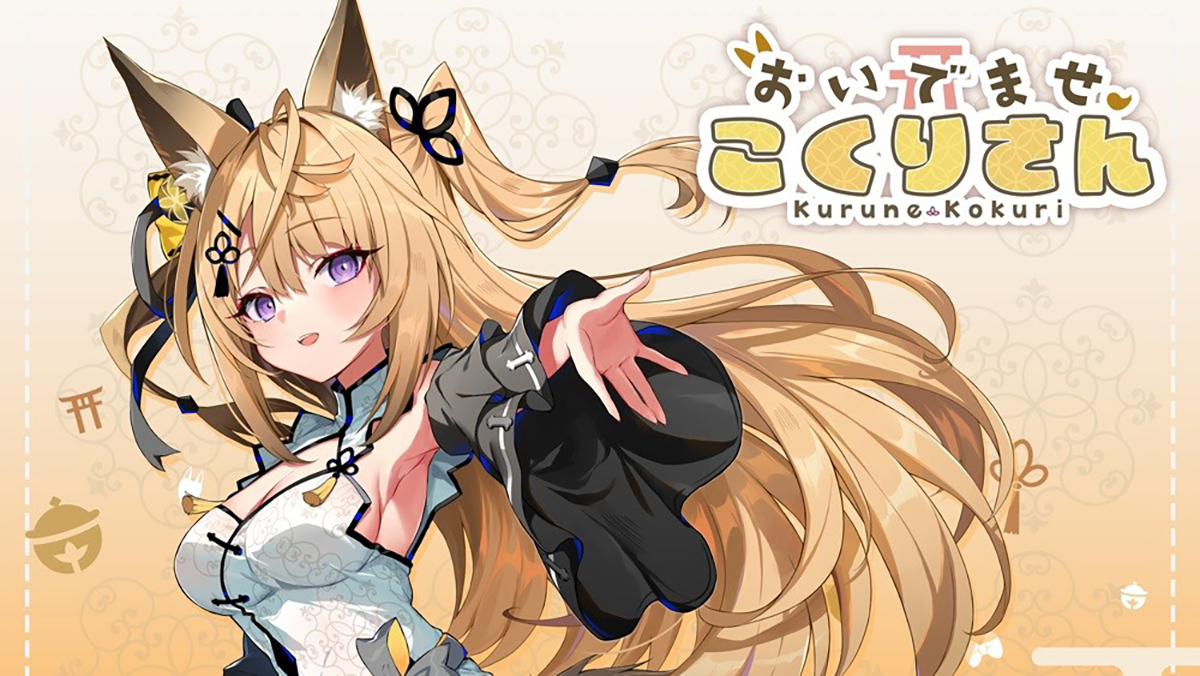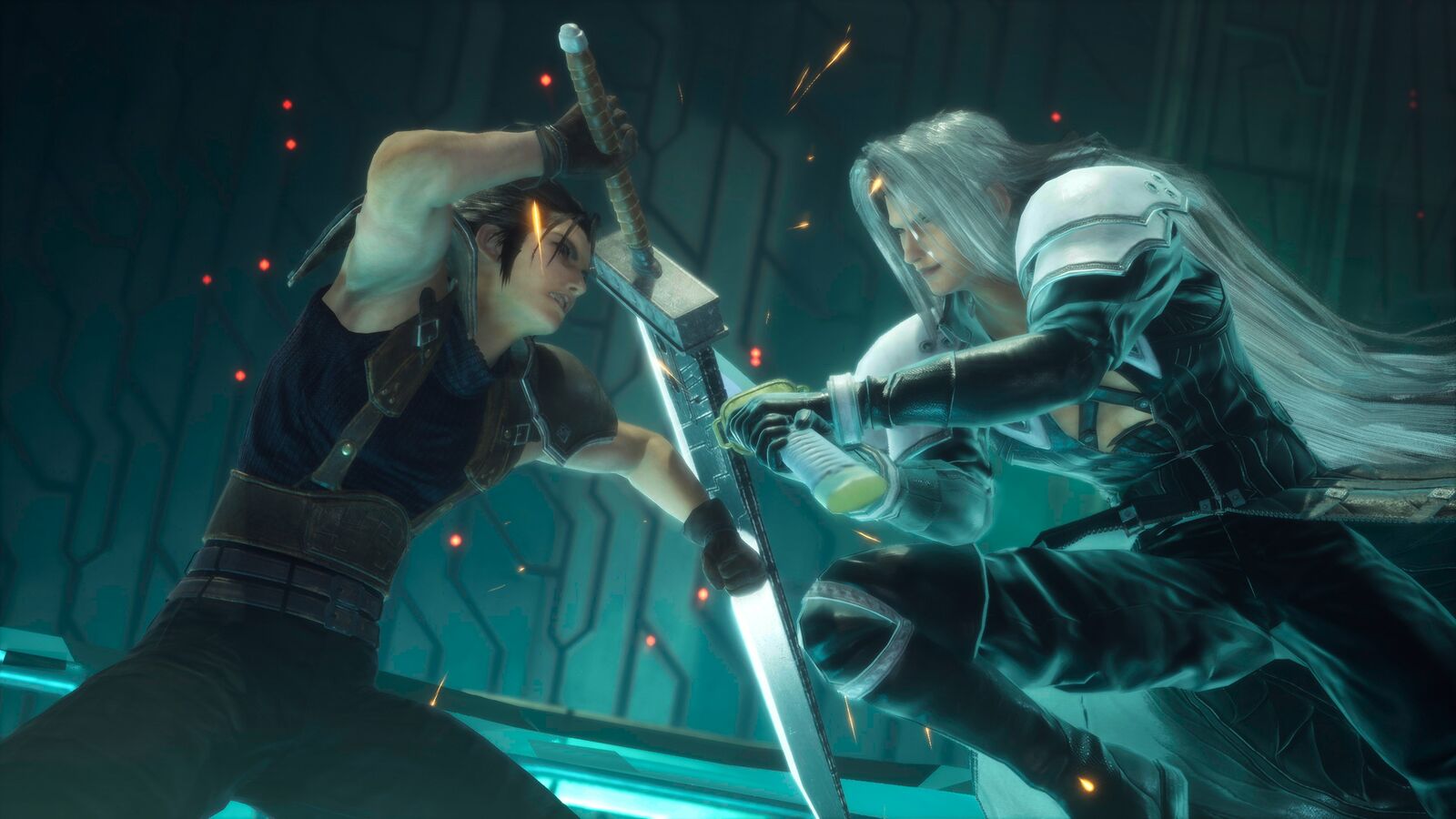I’ve had the chance to settle down and get stuck into a substantial chunk of Crisis Core: Final Fantasy VII – Reunion, and I am so impressed with this game. It’s the first time I’ve played it (I missed it on PSP for years), and yeah, it’s really, really enjoyable. I’ve done a video preview of it that you can check out here, which also gives you a significant chunk of footage to check out.
What I wanted to do with this article is discuss how I love how willing Square Enix is to let games that are decidedly not “AAA-blockbusters” sit alongside the AAA-blockbuster efforts with Final Fantasy. It’s actually quite brave, as far as IP management is concerned, and it does pay dividends for the series as a body of art. Crisis Core Reunion is by no means a bad-looking game. However, it is substantially behind the standard set by Final Fantasy VII Remake and the upcoming Final Fantasy XVI, and the fact Square Enix let this game exist is, by itself, impressive.
The pervading wisdom in the games industry, among western publishers and developers, is that AAA properties must always have AAA production values. We see this in particular with Sony. Could you imagine Sony releasing an experimental God of War spinoff? Heck, Sony couldn’t even tolerate a mere “remastered PS3 game” representing the first The Last Of Us. The company launched a ridiculously indulgent project to “remake” the game, purely to render the perfectly fine, perfectly high-quality original that was available on PlayStation 4 (and thus already playable on PS5) redundant.
The industry seems to agree that it’s fine to do a “retro” compilation of old games – as Rockstar did with Grand Theft Auto, or Activision did with Spiro, Crash Bandicoot and Tony Hawk – and when you do that it’s okay to simply up-resolution the games. After all, with those collections you’re tapping into nostalgia so “looking bad” is, in a way, the point. Meanwhile, once upon a time Rockstar even did some interesting things with its key property. GTA: Chinatown Wars is the most enjoyable GTA ever, as far as I am concerned, and that happened because Rockstar let the series be less-than-blockbuster once. Few western publishers would, in 2022, allow for anything as modest as that to exist, though. They’d be too concerned that the mainstream would reject the game, and then the property would lose some brand value.
The Japanese business culture seems to see things differently, however, and experimenting with enormously valuable properties to make “B-grade” and “spinoff” stuff is very common. Not just with Square Enix, either. Nintendo loaned out Mario to make a couple of Rabbids titles, and even gave a tiny indie the licence to the mighty Zelda series to make a little rhythm action game. Cadence of Hyrule was an incredibly brave thing for Nintendo to do with that property. Meanwhile, SNK took characters from its single most valuable property, King of Fighters, and turned them into a hyper-fanservicey, ultra-casual fighter (SNK Gals’ Fighters) which almost certainly would not have appealed to most SNK fans. Sometimes these fall flat – as Gals’ Fighters in particular seems to have – but the effort is nonetheless noteworthy and valuable for giving us something different and creative.
And then there’s Square Enix. Ever since Square Enix decided to make its first PlayStation 4 game Final Fantasy Type-0 – an absolutely incredible game, but also one that spent a lot of its time looking like Final Fantasy VII or VIII – I have been impressed by the company’s willingness to use its most valuable property for projects that are very experimental. Where Sony clearly wants some kind of guarantee that fans of God of War or The Last of Us will like anything that carries the name, Square Enix seems to be perfectly content with Final Fantasy Type-0 putting people looking for the blockbuster off, working on the assumption that they will then turn around and play FFXV anyway. Final Fantasy Type-0 can exist, out there, as a very different project for those that want to experience variety and are willing to make compromises to do so.
I prefer this approach because to me, without creativity we’ve got a pretty poor art form. It’s frustrating because I see so much potential for some of these properties, managed by western companies, to be so much more. Imagine if Sony allowed Zeboyd Games to make a 16-bit God of War game? Zeboyd managed to mine gold out of Shakespeare. I’m reasonably certain the team could do the narrative and characters of the Sony blockbuster thing justice. Why not have a The Last Of Us visual novel, or, to pick on another publisher, for EA to allow a developer to use its Star Wars license to produce a top-down shooter, in the vein of Alienation? When western publishers have loosened their grip on their properties and allowed something more modest than AAA to be brought to market, they’ve generally been rewarded. Ubisoft’s Assassin’s Creed Liberation and the Chronicles trilogy gave people settings and characters that were, perhaps, not practical for “full” games, but furthered the objective of Assassin’s Creed to cover a broad cross-section of global history. Bethesda produced a modest-sized shelter-building game based in the Fallout property, and that was a big hit. It was the blockbuster, Fallout 76, that hurt that property.
Crisis Core, meanwhile, might not look as sparkling as Final Fantasy VII Remake, but its existence enhances Final Fantasy VII. The exploits of the main man, Zack, might not warrant a full-scale blockbuster game, but his story deepens our understanding of just about everything and everyone in the “main” Final Fantasy VII. It is truly admirable that Square Enix was willing to allow it to exist despite it not being the AAA experience that some would insist on.

